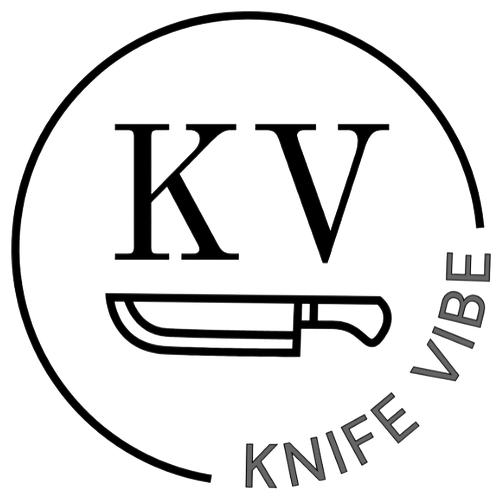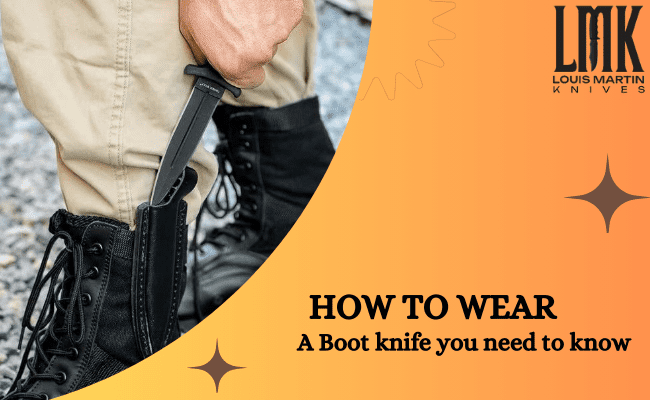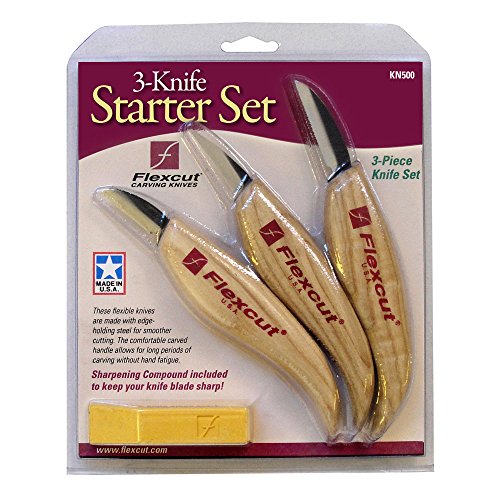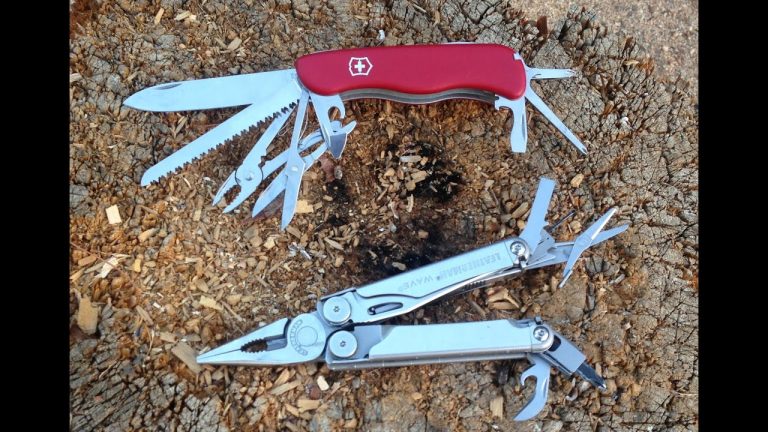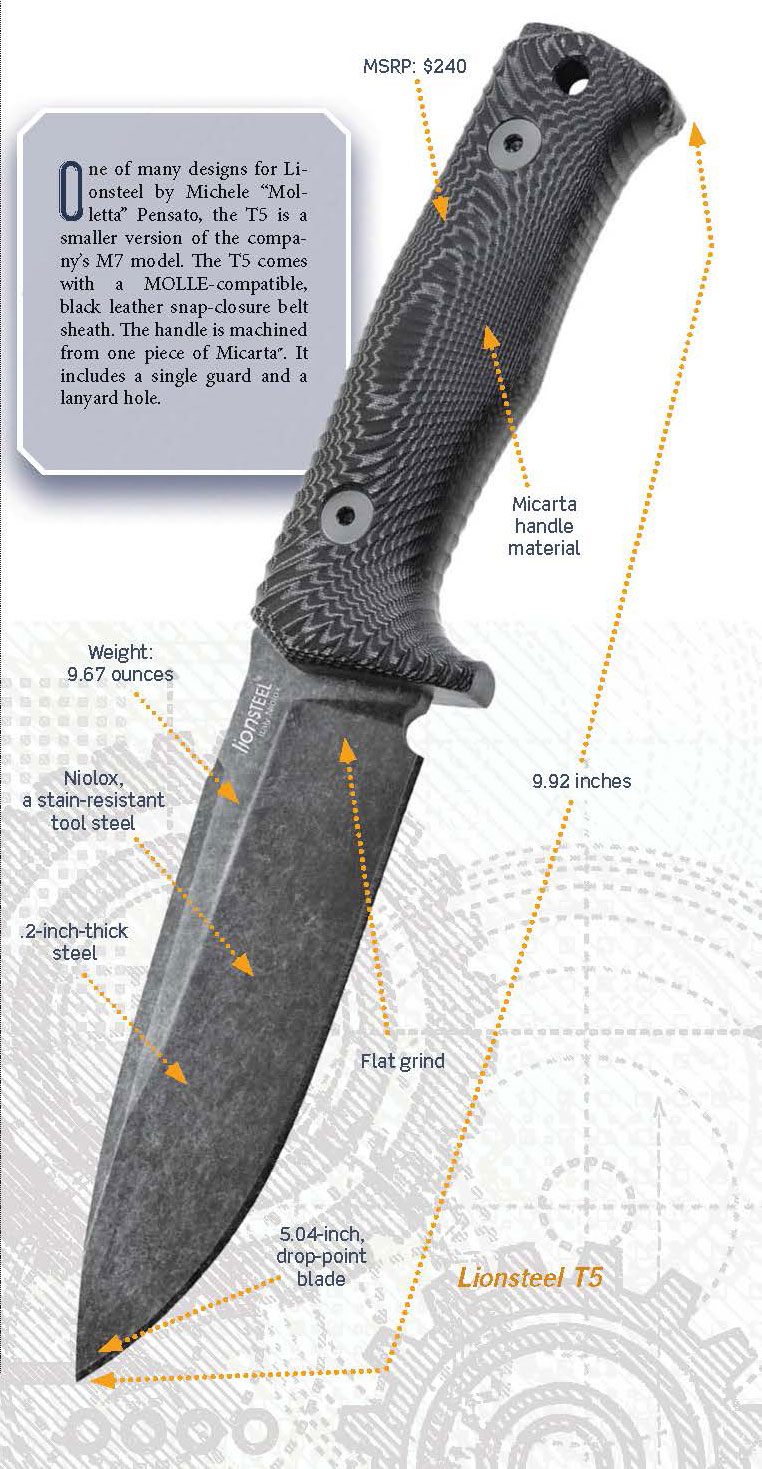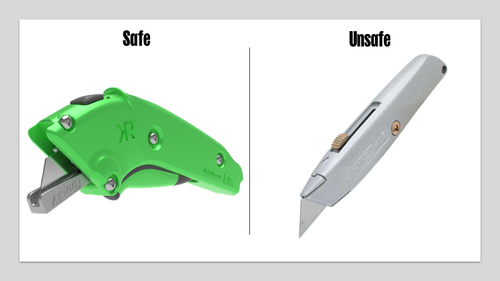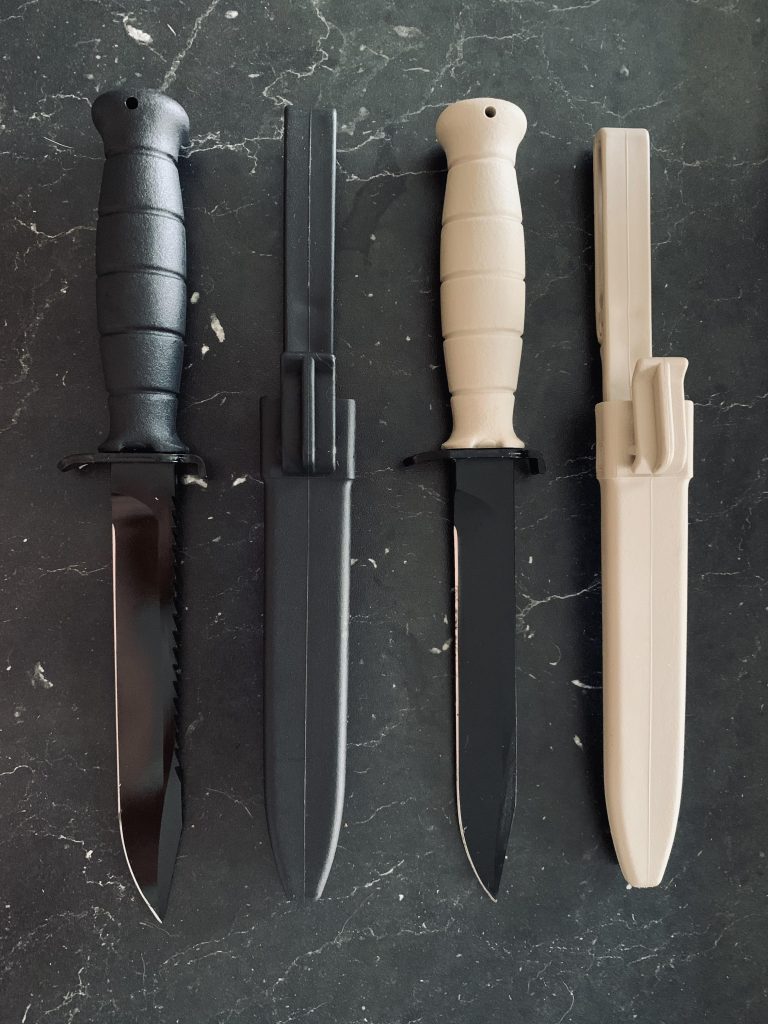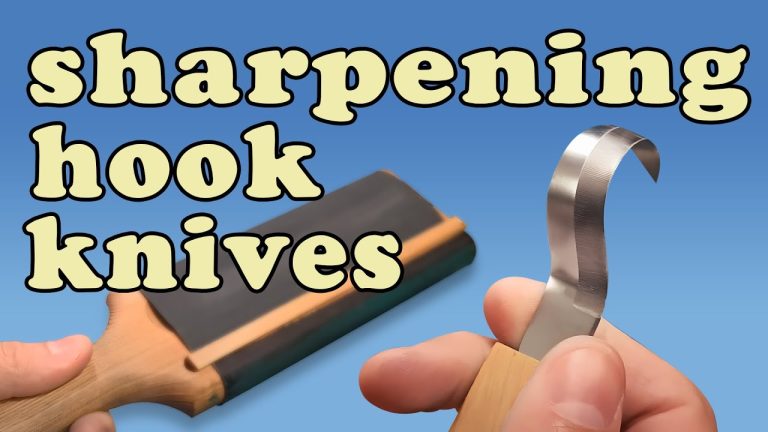How to Wear a Boot Knife: Expert Tips and Safety Tricks
Wearing a boot knife can be both practical and stylish. It offers a handy tool for various situations.
A boot knife is a small, fixed-blade knife designed to be worn inside or attached to your boot. It’s a useful tool for outdoor enthusiasts, hikers, and those who prioritize personal safety. Knowing how to properly wear and use a boot knife can enhance your outdoor experience and provide peace of mind.
This guide will explain the best ways to wear a boot knife securely and comfortably. Whether you’re new to carrying a boot knife or looking to improve your technique, these tips will help you get started. Let’s explore the essentials of wearing a boot knife effectively.
Choosing The Right Boot Knife
Choosing the right boot knife is crucial for both safety and utility. A well-selected knife ensures you are always prepared. Consider the following aspects to make an informed choice.
Blade Types
The blade type significantly impacts the knife’s functionality. Fixed blades are strong and reliable. They offer durability and are ideal for heavy-duty tasks. On the other hand, folding blades provide convenience. They are compact and easier to conceal. Both types have their own advantages. Choose based on your specific needs.
Blade shapes also matter. Drop-point blades are versatile and robust. They are great for general tasks. Tanto blades have a strong tip, perfect for piercing. Clip-point blades are sharp and precise. They excel in detailed work. Each shape offers unique benefits. Select the one that fits your requirements.
Handle Materials
Handle materials affect grip and comfort. Rubber handles provide excellent grip. They are slip-resistant and comfortable. Wood handles offer a classic look. They are sturdy and reliable. Plastic handles are lightweight and durable. They are easy to maintain and clean.
Consider textured handles for better grip. They prevent slipping during use. Ergonomic designs reduce hand fatigue. Choose a handle that feels comfortable and secure. The right handle ensures better control. It enhances your overall experience with the knife.

Credit: nobliecustomknives.com
Legal Considerations
When carrying a boot knife, it’s important to understand the legal considerations. This ensures you stay within the law and avoid any legal issues. Below are some key areas to focus on.
Local Laws
Local laws about carrying a boot knife can vary widely. Some places have strict rules, while others are more lenient. It’s crucial to know the regulations in your area.
- Check if there are restrictions on blade length.
- Understand if certain types of knives are banned.
- Look for any specific zones where knives are prohibited.
Ignorance of the law is not a valid excuse. Always do your research.
Permits And Licenses
In some regions, you may need a permit or license to carry a boot knife. This is especially true in areas with strict weapon laws.
- Visit your local law enforcement office.
- Ask if you need any special permits.
- Submit the required forms and fees.
- Wait for approval before carrying your knife.
Having the proper permits protects you from legal trouble. Always keep your permits on you.
Ideal Placement
Finding the ideal placement for your boot knife is crucial for comfort and accessibility. The right spot ensures that the knife is both secure and easy to reach. Here, we will explore two popular placements: inside the boot and outside the boot.
Inside Boot
Wearing a boot knife inside your boot offers greater concealment. It keeps the knife hidden from plain sight. This placement works best with mid- to high-cut boots. Simply slide the knife into the boot, securing it against your ankle or calf. Ensure the sheath has a clip or strap to keep it in place. Adjust the position so that it doesn’t rub or cause discomfort while walking.
Outside Boot
Placing a boot knife on the outside of your boot provides quick access. This is ideal for situations where speed is essential. Attach the sheath to the boot using straps or clips. Position it on the outer side of your ankle or calf. Make sure the knife is secure but easy to draw. Check regularly to ensure it stays in place during movement.

Credit: www.reddit.com
Attaching The Knife Securely
Ensuring your boot knife is attached securely is crucial. It guarantees easy access and prevents accidents. This section covers the best methods to attach your boot knife.
Sheath Options
A good sheath is essential for secure attachment. There are several sheath options available:
- Leather Sheaths: Durable and stylish. They mold to the knife over time.
- Nylon Sheaths: Lightweight and flexible. Ideal for active use.
- Kydex Sheaths: Rigid and waterproof. Provides a secure fit.
Choosing the right sheath depends on your needs and preferences.
Strapping Techniques
Proper strapping techniques ensure your knife stays in place. Here are some methods:
- Velcro Straps: Quick and adjustable. Easy to use.
- Elastic Bands: Stretchy and secure. They conform to your boot.
- Snap Fasteners: Strong and reliable. Provide a tight grip.
Each technique offers different benefits. Choose what suits you best.
| Sheath Type | Pros | Cons |
|---|---|---|
| Leather | Durable, Stylish | Requires maintenance |
| Nylon | Lightweight, Flexible | Less durable |
| Kydex | Rigid, Waterproof | Less comfortable |
Using these methods ensures your boot knife is attached securely. Choose the right sheath and strapping technique for a safe and practical solution.
Safety Precautions
Wearing a boot knife can be practical and stylish. But safety is key. Knowing how to handle and carry a boot knife properly is essential. It helps avoid accidents and ensures you stay safe. Let’s explore some safety precautions.
Proper Handling
Always hold the knife by the handle. Never touch the blade directly. Keep the knife in its sheath when not in use. Check the sheath regularly for wear and tear. Replace it if needed.
- Grip the handle firmly.
- Keep the blade away from your body.
- Store the knife in a secure place.
Using a dull knife is dangerous. Sharpen the blade regularly. Use a proper sharpening tool.
- Use a sharpening stone or rod.
- Follow the manufacturer’s instructions.
Avoiding Accidents
Be aware of your surroundings. Avoid using the knife in crowded areas. Accidents can happen if people are too close.
- Check the area before drawing the knife.
- Ensure no one is within arm’s reach.
Wear appropriate clothing. Avoid loose-fitting clothes that could get caught on the knife.
| Do | Don’t |
|---|---|
| Wear fitted pants. | Wear baggy pants. |
| Use a secure sheath. | Use a damaged sheath. |
Practice drawing the knife in a safe environment. This builds muscle memory and reduces the risk of accidents.
Remember, safety first. Keep these tips in mind, and you can enjoy carrying your boot knife safely and confidently.
Maintenance Tips
Maintaining your boot knife ensures it stays sharp and reliable. Proper care can extend its life and keep it effective. Here are some essential maintenance tips to follow.
Regular Cleaning
Regular cleaning is crucial for your boot knife. Dirt and grime can dull the blade and cause rust.
- Wipe the blade with a soft cloth after each use.
- Use mild soap and water for deeper cleaning.
- Dry the knife thoroughly to prevent rust.
Never let your knife stay wet. Moisture can damage the blade.
Sharpening The Blade
Keeping the blade sharp is essential for its performance. A dull blade can be dangerous and less effective.
- Use a sharpening stone for a precise edge.
- Hold the blade at a 20-degree angle to the stone.
- Move the blade in a smooth, consistent motion.
Sharpen both sides evenly. This ensures a balanced edge.
Regular maintenance keeps your boot knife in top shape. Follow these tips to ensure reliability and safety.
Emergency Situations
Emergency Situations can arise without warning. A boot knife can be a handy tool in such moments. Knowing how to use it effectively can make a big difference. Below are some scenarios where having a boot knife can be valuable.
Self-defense Scenarios
In dangerous situations, a boot knife can serve as a last line of defense. It can help protect you from attackers. Keeping it accessible is crucial. Wear it on your dominant side. This ensures quick access.
- Conceal it under your pant leg.
- Ensure the sheath is secure.
- Practice drawing it quickly and safely.
These steps can help you stay safe. Remember, the goal is to use it only as a last resort.
First Aid Preparedness
A boot knife can also aid in first aid situations. It can be used to cut clothing or bandages. It can even help in making splints or tourniquets.
| Task | How a Boot Knife Helps |
|---|---|
| Cutting Bandages | Quickly and precisely cuts through material. |
| Making Splints | Can be used to cut branches or sticks. |
| Creating Tourniquets | Helps in cutting fabric or cloth strips. |
Keep your knife clean to avoid infections. Always disinfect it after use.

Credit: www.youtube.com
Everyday Carry (edc) Tips
Everyday Carry (EDC) tips for wearing a boot knife can help you stay prepared. Whether you’re an outdoor enthusiast or someone who values personal safety, knowing how to properly carry a boot knife is essential. Here, we’ll explore some practical tips to ensure you can discreetly and safely carry your boot knife every day.
Discreet Carrying
To carry a boot knife discreetly, choose a small, lightweight knife. This makes it easier to conceal. Ensure the knife has a secure sheath. This prevents accidental exposure or injury.
Wear pants that cover the top of your boots. This hides the knife from plain sight. Position the knife on the inside of your leg. This makes it less noticeable and provides quick access.
Practice drawing the knife smoothly. This ensures you can retrieve it quickly if needed. Consider different carry positions. Find what feels most comfortable and secure for you.
Situational Awareness
Always be aware of your surroundings. This helps you stay prepared and safe. Scan the area for potential threats or hazards. Keep the knife in its sheath until needed.
Understand local laws regarding carrying knives. This ensures you’re compliant and avoid legal issues. Use the knife responsibly. It is a tool, not a weapon.
Maintain a calm demeanor. Avoid drawing attention to yourself or the knife. Use the knife only in necessary situations. This ensures it remains a valuable part of your EDC gear.
Frequently Asked Questions
How To Choose A Boot Knife?
Selecting a boot knife involves considering size, blade type, and handle material. Ensure it fits comfortably in your boot. A good boot knife should be durable and easy to access.
Where To Place A Boot Knife?
Place your boot knife inside the boot, either on the side or the back. Ensure it’s secure and easily accessible. Avoid placing it where it might cause discomfort or interfere with walking.
How To Secure A Boot Knife?
Use a sheath to secure your boot knife. Attach the sheath to your boot’s interior or exterior with straps or clips. Ensure it’s firmly fixed and doesn’t move around.
Is It Legal To Wear A Boot Knife?
Check local laws and regulations regarding carrying knives. Some places have restrictions on blade length or concealed carry. Always abide by the law to avoid legal issues.
Conclusion
Wearing a boot knife can be practical and stylish. Choose the right knife for your needs. Ensure it is comfortable and secure. Practice drawing and re-sheathing it safely. Always be mindful of local laws. Wearing a boot knife can offer peace of mind.
It’s a useful tool for many situations. Follow these tips and wear your boot knife confidently. Stay safe and prepared.
